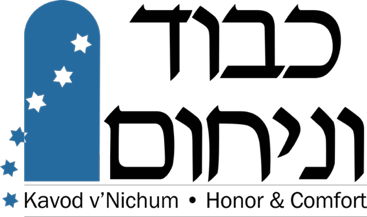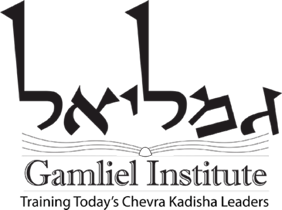Models of Chevrah Kadisha Organization
When organizing a new chevrah, there are three main structural models to choose from: synagogue-based, facility-based, and community-wide organizations. Below we delineate the pros and cons of each approach, realizing that some communities may have no choice – there may be just one model that works.
Synagogue-Based Chevrah Kadisha Pros and Cons
The first model we consider is the single synagogue model, in which the Chevrah Kadisha is formed as an extension of the synagogue organization, and as such is based on and structured through that specific synagogue and its members. This synagogue-based model assumes that all members of the chevrah are members in the synagogue, and that the services of the chevrah are for the members of the synagogue. The synagogue community is the community served by the chevrah, and the chevrah work is complemented by the committees and resources of the synagogue.
Advantages of this approach:
- Built-in supportive relationship between the synagogue management and resources and the chevrah
- There’s a clear path for getting rabbinic advice for the chevrah
- Services of the chevrah are considered a benefit for members of the synagogue
- Membership in the chevrah is considered an honor in the synagogue and is promoted by the synagogue management and clergy
- Synagogue membership provides a well-defined pool of potential chevrah members
- Educational programs already target synagogue membership; it’s easy to add chevrah trainings and general end-of-life education to this list, and mechanisms already exist to advertise and promote such events
- As a service provided by and supported by the synagogue, the chevrah is already on the radar of the synagogue clergy
- Since synagogues may already have caring committees and other such entities in place, expanding the scope of the chevrah beyond just taharah is easier and often very much supported
Disadvantages of this approach:
- Because synagogues are usually affiliated with a particular Jewish denomination, this association by its nature:
- may limit the choice of potential funeral homes and cemeteries with whom the chevrah can work
- may define requirements for the work of the chevrah, confining it to a particular approach to taharah and shmirah
- may limit who can or cannot participate in chevrah activities
- may limit the extent, content, and origin of chevrah education and training options
- Unaffiliated Jews may not be able to employ the services of the chevrah since they are non-members of the synagogue (although a synagogue-based chevrah may choose to provide services to unaffiliated Jews as well).
Facility-Based Chevrah Kadisha Pros and Cons
The second model we consider is the facility model, in which the Chevrah Kadisha is formed as an extension of a funeral home or cemetery, or sometimes a combined cemetery and funeral home facility. Some of these are facilities that are owned and operated by a synagogue, many are not, and they might be owned by for-profit funeral home conglomerates. The communities they serve are usually Jews in a geographic area, usually surrounding the facility. Those operated by a synagogue bridge this category and the above synagogue-based chevrah style, gaining the benefits of synagogue support.
Advantages of this approach:
- Built-in supportive relationship between the facility and the chevrah
- The pool of potential chevrah members may include membership of all synagogues in the geographical area as well as unaffiliated Jews
- The chevrah only has to work with the staff of one funeral home, often establishing a close relationship, facilitating the procurement of supplies, arrangement of furniture, operation of building heating and cooling systems, etc.
- Services are provided to all Jews in the defined area, so the chevrah can be flexible in how it performs its tasks, based on who it is serving; various denominations and levels of observance can be served easily (if rules of the facility allow it)
Disadvantages of this approach:
- The chevrah may be limited to providing service at this facility
- The operation of the chevrah is under the management of the facility and hence must conform to the rules of the facility, possibly limiting its ability to serve all Jews in the area
- If the facility is not owned by a synagogue:
- getting new members into the chevrah requires expanded community education programs
- expanding the scope of chevrah work beyond taharah often has less support
Community-Wide Chevrah Kadisha Pros and Cons
The third model we consider is the community chevrah, in which several synagogues, perhaps in a large geographic area, are all served by one umbrella organization that supports a Chevrah Kadisha for the benefit of the combined communities. The community-wide model assumes that all Jews in the geographic area are available to participate in the chevrah, and all Jews in the area are served by the chevrah. The community served by the chevrah can be large and often complex, in that it contains several congregations, often of varying degrees of observance, along with many unaffiliated Jews. This community can be complemented by committees and resources of the synagogues involved, or not, depending on the local politics and arrangements.
Advantages of this approach:
- The pool of potential chevrah members includes membership of all synagogues in the geographical area as well as unaffiliated Jews
- Services are provided to all Jews in the defined area, so the chevrah can be flexible in how it performs its tasks, based on who it is serving; various denominations and levels of observance can be served easily
- The chevrah can work with any and all clergy, funeral homes, and cemeteries in the service area
- This approach works well when no one synagogue in the area can provide enough members to support a chevrah on their own; by pooling resources, all of the synagogues benefit from this arrangement
- This approach enables very disparate denominations to work closely together to do this holy work
Disadvantages of this approach:
- Getting new members into the chevrah requires expanded community education programs
- The politics and relationships between synagogues, clergy, funeral homes, and cemeteries can hinder the operation of the chevrah
- To work effectively with various synagogues, funeral homes, and cemeteries, the chevrah must have an operational governing entity that can arrange for the chevrah to use facilities, coordinate with caring committees, use synagogue communications channels, engage in community education and outreach, and so forth
Meeting the Needs of Your Community
Obviously, no single model fits every community, and in fact, some communities are so large that they include all three models actively operational in different areas. What’s important here is to understand that there are differing approaches to implementing a Chevrah Kadisha, and that some form of one of the above models will probably work.
Kavod v’Nichum has staff who work in all of these models of chevrah work, so we can offer guidance to help your community decide which model is best. Please don’t hesitate to contact us with questions or to discuss how we can help, info@jewish-funerals.org.

